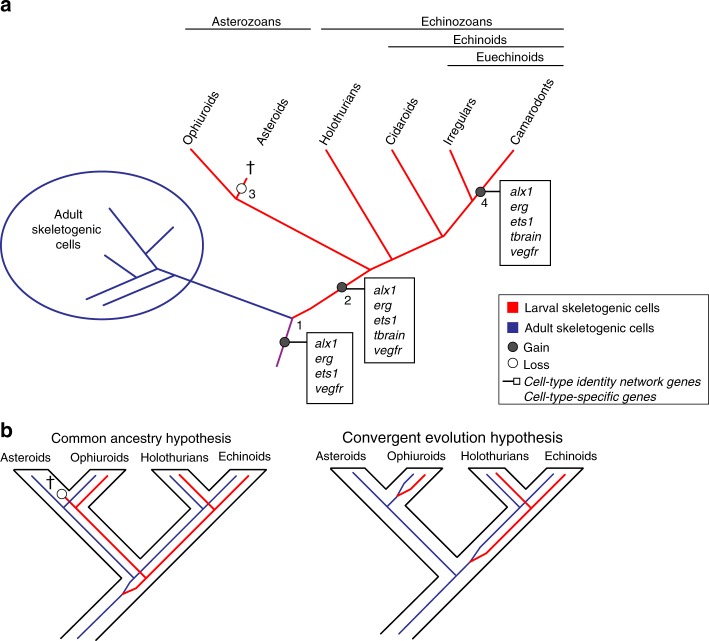Fig. 4.
Cell-type evolution of echinoderm larval skeletogenic cells. a A cell-type duplication event resulted in activation of the adult skeletogenic cell-type identity network in early development, and thus the presence of skeletogenic cells in ancestral embryonic mesodermal territories (Node 1). Alx1 and vegfr are components of a cell-type specific identity network of larval skeletogenic cells across all extant eleutherozoans. The combination of alx1, erg, ets1, and vegfr comprise the cell-type identity network of skeletogenic cells across this clade. After the duplication event, at least one transcription factor that was ancestrally expressed in embryonic mesoderm domains, tbrain, was subsequently integrated into the larval skeletogenic GRN (Node 2), giving rise to two sister cell types. The larval skeletogenic cell type was lost in asteroids after the divergence with ophiuroids (Node 3). In the lineage leading to extant camarodont euechinoids, tbrain was decoupled from and no longer participated in specification of non-skeletogenic mesodermal cell types through Erg-mediated repression. Different colors represent cell-type lineages. Adult skeletogenic cells, purple. Larval skeletogenic cells, red. b Two competing hypotheses for the origin of larval skeletogenic cells in eleutherozoan echinoderms. The common ancestry hypothesis suggests that all larval skeletogenic cells in eleutherozoans are the result of a cell-type duplication event in the stem lineage of eleutherozoans. These cells would be lost in the lineage leading to extant asteroids. The convergent evolution hypothesis posits that larval skeletogenic cells are the result of at least two evolutionary events, one in the stem lineage of echinozoans and one other in the stem lineage of ophiuroids. Our results support the common ancestry hypothesis

